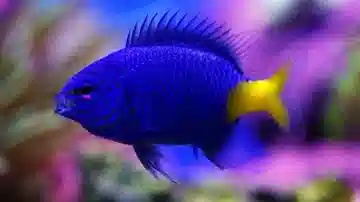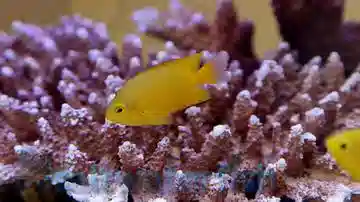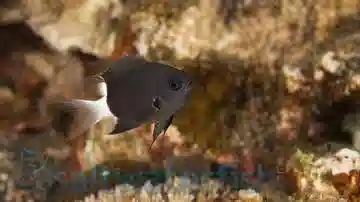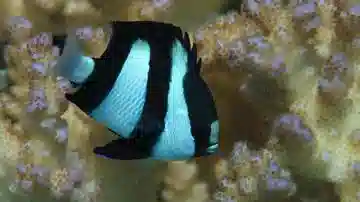3 Stripe Damsel
Dascyllus aruanus
(9 Reviews)
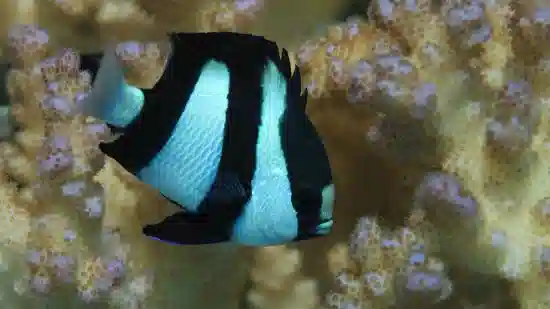
3 Stripe Damsel
Dascyllus aruanus
(9 Reviews)
{{ item.name }}
Size: {{ item.extra_field_3 }}
${{ getFormattedPrice(item.saleprice) }} ${{ getFormattedPrice(item.price) }}
To join the waiting list, click here
Free Shipping
With
$199.00
or more in Marine Life.
More details...
3 Stripe Damsel Care Facts
| Care Level: | Easy |
|---|---|
| Temperament: | Aggressive |
| Diet: | Omnivore |
| Reef Safe: | Yes |
| Minimum Tank Size: | 30 gallons |
| Max Size: | 4 inches |
Three Stripe Damselfish (Dascyllus aruanus): Aquarium Care Guide
The Three Stripe Damselfish is a popular fish for your saltwater aquarium. Read more information belowThree Stripe Damselfish (Dascyllus aruanus) Habitat and Natural Environment:
The Three Stripe Damselfish, scientifically known as Dascyllus aruanus, is native to the Indo-Pacific region, thriving in coral-rich areas, lagoons, and outer reef slopes. In captivity, replicating their natural habitat involves providing ample live rock structures and open swimming spaces.
Three Stripe Damselfish Reef Compatibility and Behavior:
Considered reef safe, the Three Stripe Damselfish adapts well to various reef setups. However, their territorial nature may lead to aggression, especially during breeding. Monitoring interactions and providing hiding spaces for other tank inhabitants can help manage potential conflicts.
Three Stripe Damselfish Size, Lifespan, and Sexual Dimorphism:
With an average size of around 3 inches, Three Stripe Damselfish exhibit minimal sexual dimorphism. Under proper care, they can live for several years, making them a durable and engaging addition to saltwater aquariums.
Three Stripe Damselfish Diet in Captivity:
Thriving on a diverse diet, Three Stripe Damselfish readily accept high-quality marine pellets and flakes. Supplementing their diet with frozen or live brine shrimp and mysis shrimp enhances their overall health and coloration.
Three Stripe Damselfish Aquaculture and Availability:
At Saltwaterfish.com, our Three Stripe Damselfish comes from reputable aquaculture facilities or sustainably collected wild stock. This ensures a consistent supply of acclimated and healthy fish, promoting sustainable practices in the marine aquarium hobby.
Three Stripe Damselfish Tank Requirements:
Maintaining optimal conditions is crucial for the well-being of Three Stripe Damselfish. A recommended minimum tank size of 30 gallons, with live rock structures and open swimming spaces. Stable water parameters, including a pH of 8.1-8.4, salinity between 1.020 and 1.025, and a water temperature of 74°F to 78°F, contribute to their overall health. Moderate water flow ensures a comfortable and thriving environment.
Three Stripe Damselfish Juvenile to Adult Coloration Changes:
Juvenile Three Stripe Damselfish often exhibit subdued coloration, intensifying as they mature. The transition to adulthood showcases their distinctive three-stripe pattern, making them visually striking in a saltwater aquarium.
Three Stripe Damselfish Common Names:
- Humbug Dascyllus
- Three-Striped Damselfish
- 3 Stripe Damsel
Compatible Tank Mates for the 3-Stripe Damsel:
- Ocellaris Clownfish (Amphiprion ocellaris)
- Banggai Cardinalfish (Pterapogon kauderni)
- Fire Goby (Nemateleotris magnifica)
- Yellow Watchman Goby (Cryptocentrus cinctus)
- Royal Gramma (Gramma loreto)
Why Choose the Three Stripe Damselfish from Saltwaterfish.com?
Choosing Saltwaterfish.com ensures that you acquire a healthy and acclimated Three Stripe Damselfish for your saltwater aquarium. Our meticulous quarantine process guarantees disease-free specimens, providing peace of mind for aquarium enthusiasts. Purchase your Three Stripe Damselfish with confidence, knowing you are investing in a hardy and visually captivating addition to your marine setup.
Reviewed by: Ricky Hardee on Nov. 14, 2024
Reviewed by: Damian Aguero on June 25, 2024
Reviewed by: Damian Aguero on June 19, 2024
Reviewed by: Bryant Smith on Jan. 31, 2024
Reviewed by: Russell Martin on July 20, 2023
As usual, SWF does it best. Fish are beautiful, healthy and very active in my small reef (55 gal.) I also have 2 other reef tanks (125 gal. and 300 gal.) that SWF supplied the fish for. I recommend SWF highly. Plus, their customer service is great. If you have any problem with an order, they will take care of it ASAP.
Reviewed by: Ty Phillips on March 12, 2017
I don't want to say "bully". Just a small "hyperactive" guy. Best kept in pairs or 3's and 4's to keep each other busy.
Reviewed by: Mike Courtney on Dec. 13, 2014
Very active and healthy. good for any tank.
Reviewed by: Brian Depriest on Aug. 2, 2014
These fella's are very cute when small but as they grow up they ARE bully's so if you have anything that is shy or smaller, you might want to think about it first. I have a blast with mine because he loves to torture me, he watches every move I make and does a "dipping dance" when he gets bored to entice me to "play" with him. I place my hand in the tank and he circles it and bumps me with his tail. They are very entertaining but not nice to smaller fish.
Reviewed by: Joye Cantrell on May 15, 2012



